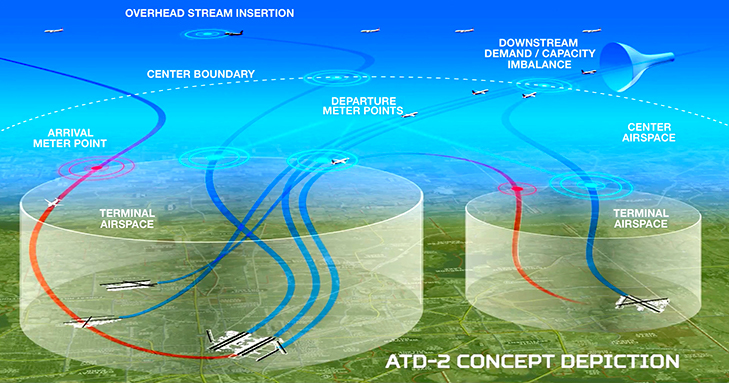 |
ATD-2 Industry Workshop Documentation Outline / High Level Software Description / Fuser Architecture Overview
Fuser Filtering Overview
Fuser Filtering Rules
Filtering rules are rules to filter out an entire update before the data is applied to the fused flight. The most common example would be only process data for flights arrival or departing a certain airport. However, they could be expanded to filter out other cases such as filter out all track updates from TFMS could be implemented as a filtering rule. Note: In addition to FAA SWIM, ATD-2 partner airlines and 3rd party data provider also supplied the Fuser with data. The rules used with these data source provide additional examples of Filtering Rules.
Filter Name |
Active |
Description |
Reason |
| AttributeFilter |
True |
See next section (Fuser Attribute Filtering Rules) below for details. |
In certain cases, we know that a source has bad data in certain fields, we don't trust the values, or we feel we will have better data from another source. |
| FlightPositionFilter |
True |
Filter out the position update if that latitude, longitude, or timestamp is null. |
The systems needs to have all three to have a valid position. At times we are getting bad data with one of those three fields missing causing problems downstream. |
| GufiFilter |
True |
Filter out any messages that have not been assigned a GUFI (Global Unique Flight Identifier). |
These are messages we were unable to match typically due to a lack of information. |
| LocationFilter |
True |
Filter out any messages that are not arriving at CLT, departing from CLT, or a Surveillance target at CLT. |
In this case, the Fuser was for an STBO system operating for Charlotte Douglas International Airport (CLT) and Therefore only needed data relevant to CLT. Implemented to keep performance under control by not processing data not relevant to CLT. |
| NasaTmaArrivalTimePredictionsFilter |
False |
Filter out NASA TBFM Arrival Time predictions (STA). |
This was put in place before improvements were made to NASA TBFM to improve the arrival time predictions (STA). |
Fuser Attribute Filtering Rules
Attribute filtering rules are rules to filter out fields before they are applied to the fused flight. This is done in cases where a source is known to have either bad data in certain fields, we don't trust the values, or we feel we will have better data from another source. Note: In addition to FAA SWIM, ATD-2 partner airlines and 3rd party data provider also supplied the Fuser with data. The rules used with these data source provide additional examples of Attribute Filtering Rules.
Field |
Excluded by Sources |
Reason |
| arrivalFixActualTime |
Airline Data 3rd, Party Data |
Relying on STBO detection times for the actual values |
| arrivalMovementAreaActualTime |
Airline Data 3rd, Party Data |
Relying on STBO detection times for the actual values |
| arrivalRunwayActualTime |
Airline Data 3rd, Party Data,
TFMS_Flight,
TFM_Terminal |
Relying on STBO detection times for the actual values |
| departureFixActualTime |
Airline Data 3rd, Party Data |
Relying on STBO detection times for the actual values |
| departureMovementAreaActualTime |
Airline Data 3rd, Party Data |
Relying on STBO detection times for the actual values |
| departureRunwayActualTime |
Airline Data 3rd, Party Data,
TBFM,
TFMS_Flight,
TFMS_Terminal |
Relying on STBO detection times for the actual values |
| departureQueueEntryActualTime |
Airline Data 3rd, Party Data |
Relying on STBO detection times for the actual values |
| departureRunwayAssigned |
TBFM |
The departure runway is only coming with the runway number and not an indication if is L,R, or C. For example 18 instead of 18L. This makes the value not useful and problematic for STBO. Additionally the departure runway is being supplied by STBO so applying it from TBFM is not necessary. |
+ Back to Top |
 |

